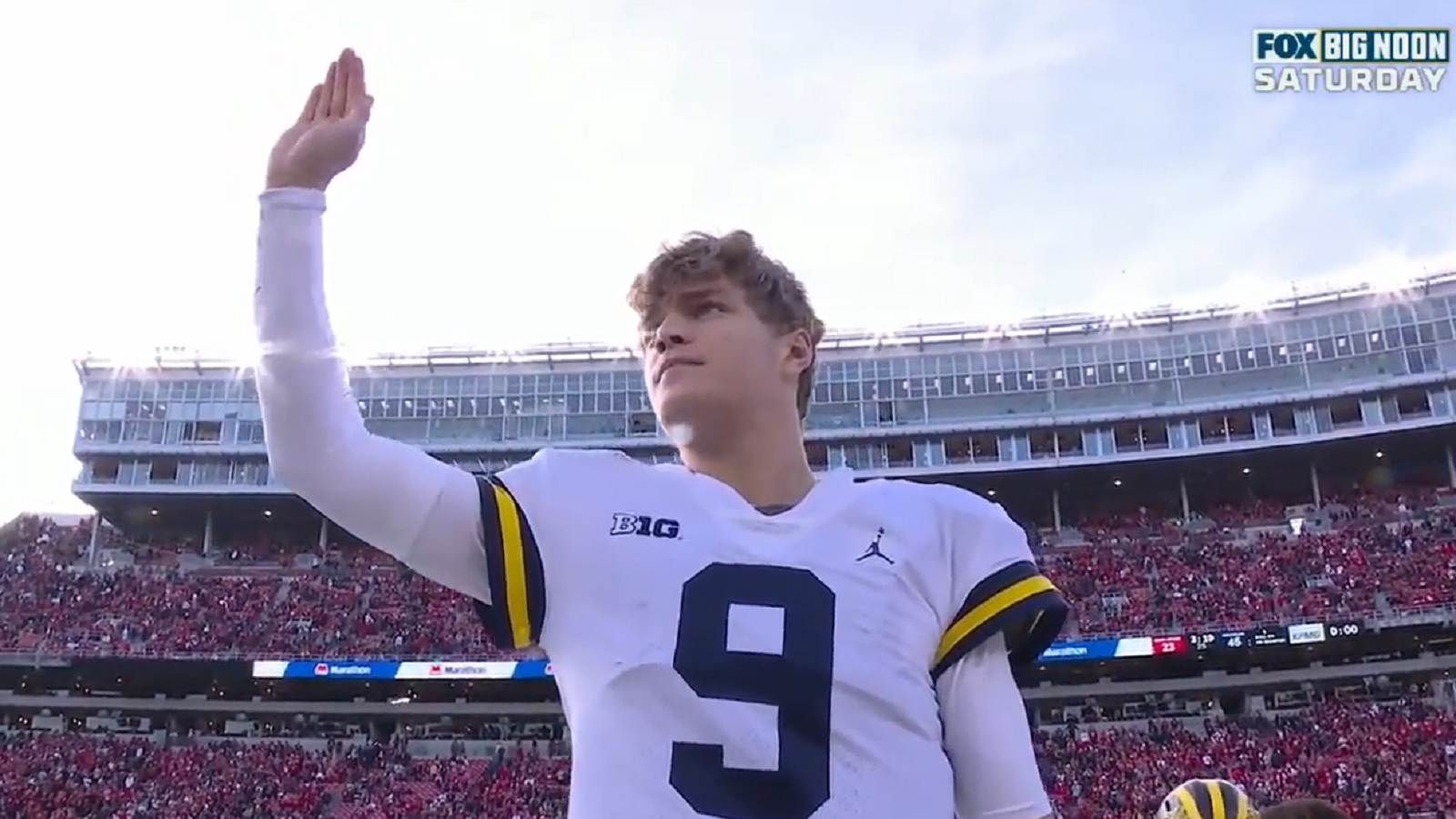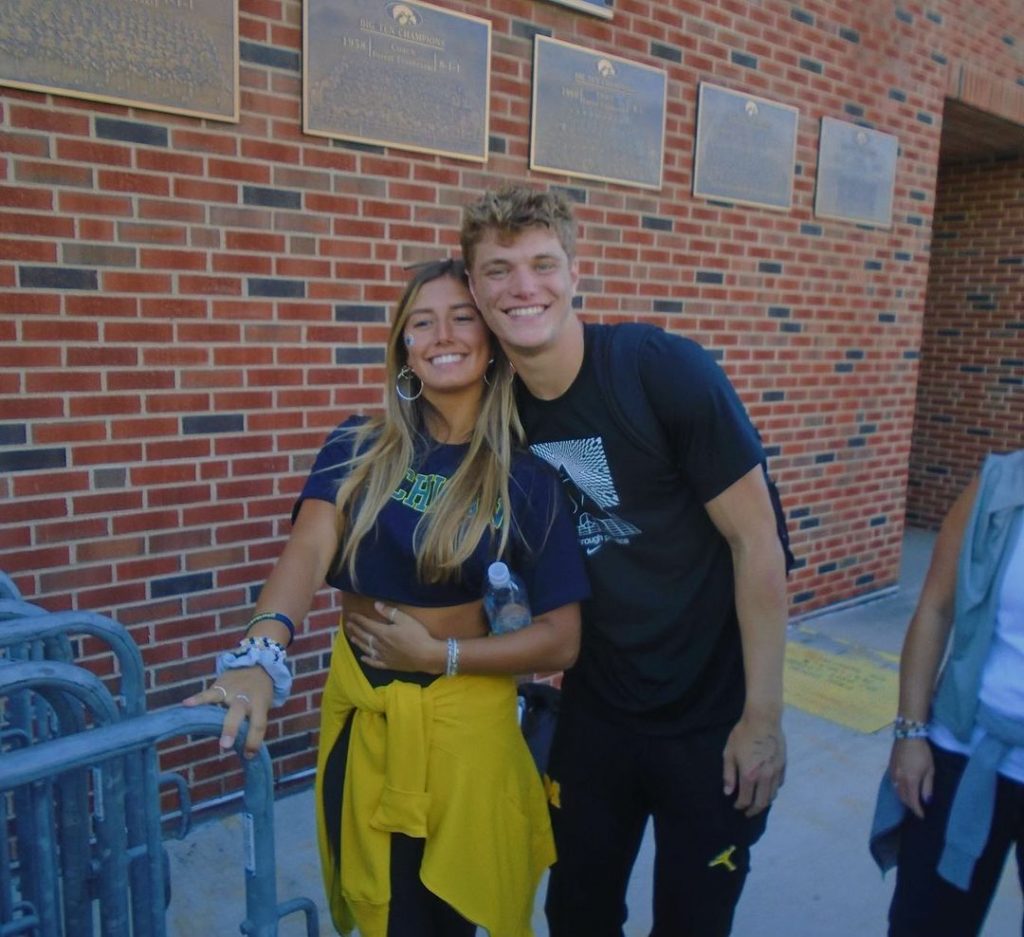JJ McCarthy’s Surgical History

JJ McCarthy, the talented quarterback for the Michigan Wolverines, has navigated a few surgical procedures throughout his athletic career. These surgeries, while potentially impacting his performance, have also shaped his resilience and determination.
The Impact of Surgeries on Athletic Performance
The potential impact of surgeries on an athlete’s performance is multifaceted. While surgery can address injuries and improve long-term health, it also comes with a recovery period that can hinder training and competition.
JJ McCarthy’s Surgical Procedures, Jj mccarthy surgery
JJ McCarthy has undergone two known surgical procedures:
- Shoulder Surgery: In 2020, McCarthy underwent surgery to repair a torn labrum in his throwing shoulder. This injury is common among athletes, particularly those who participate in overhead throwing sports like baseball and football. The surgery involved repairing the torn cartilage in the shoulder joint, which helps stabilize the shoulder and prevent further injury.
- Appendectomy: In 2021, McCarthy underwent an appendectomy to remove his inflamed appendix. This procedure is typically performed as an emergency surgery to prevent complications like peritonitis. While not directly related to his athletic performance, this surgery likely impacted his training schedule and recovery time.
Recovery Process and Challenges
The recovery process after each surgery presented unique challenges for McCarthy.
- Shoulder Surgery: Following his shoulder surgery, McCarthy faced a rigorous rehabilitation program to regain strength, flexibility, and range of motion in his throwing arm. This process required dedication and patience as he worked to rebuild his shoulder and prepare for a return to the field.
- Appendectomy: McCarthy’s appendectomy recovery involved managing pain and discomfort while allowing his abdomen to heal. The recovery time for this procedure is typically shorter than for shoulder surgery, but it still required adjustments to his training and daily activities.
The Role of Surgery in Football Injuries: Jj Mccarthy Surgery

Football, a sport renowned for its physicality and intensity, inevitably leads to a high incidence of injuries. While many injuries can be managed conservatively, some require surgical intervention to restore function and allow athletes to return to the field.
Common Football Injuries Requiring Surgery
Surgical intervention becomes necessary when non-operative treatment options fail to provide adequate pain relief or restore function. Some common football injuries that often necessitate surgery include:
- ACL Tears: The anterior cruciate ligament (ACL) is a vital ligament in the knee that provides stability and prevents excessive forward movement of the tibia. An ACL tear can occur due to a sudden twisting or hyperextension injury. Surgery is typically recommended to reconstruct the ligament using a graft from another part of the body, such as the patellar tendon or hamstring tendon. This procedure aims to restore knee stability and allow athletes to resume their athletic activities.
- Meniscus Tears: The menisci are C-shaped cartilage pads that act as shock absorbers in the knee joint. A meniscus tear can occur due to a forceful twisting or impact injury. Depending on the severity and location of the tear, surgery may be necessary to repair or remove the damaged portion of the meniscus.
- Shoulder Injuries: Football players are prone to shoulder injuries, including rotator cuff tears, labral tears, and dislocations. These injuries can occur due to direct impact, repetitive overhead movements, or forceful tackles. Surgery may be required to repair or reconstruct the damaged structures, restoring shoulder stability and function.
- Foot and Ankle Injuries: Ankle sprains, Achilles tendon ruptures, and stress fractures are common foot and ankle injuries in football. Surgical intervention may be necessary to repair torn ligaments, stabilize the ankle joint, or address stress fractures that fail to heal conservatively.
Surgical Techniques for Football Injuries
A variety of surgical techniques are employed to address football injuries, each with its own advantages and disadvantages.
- Arthroscopic Surgery: This minimally invasive technique involves making small incisions and inserting a thin, tubular instrument with a camera and surgical tools. It is commonly used for procedures like ACL reconstruction, meniscus repair, and rotator cuff repair. Arthroscopic surgery offers benefits such as smaller incisions, less pain, and faster recovery times.
- Open Surgery: Open surgery involves a larger incision to access the injured area directly. It may be necessary for complex injuries or when arthroscopic techniques are not feasible. While open surgery offers greater visibility and precision, it is associated with longer recovery times and a higher risk of complications.
- Bone Grafting: In some cases, bone grafts may be necessary to promote bone healing or to fill in bone defects. These grafts can be harvested from the patient’s own body or obtained from a donor. Bone grafting can be used to treat stress fractures, non-union fractures, and other bone injuries.
Rehabilitation After Surgery
Rehabilitation plays a crucial role in the recovery process after surgery. It is essential to follow a structured program that includes physical therapy and strength training.
- Physical Therapy: Physical therapy aims to restore range of motion, strength, and flexibility. It involves exercises designed to improve joint mobility, muscle strength, and balance. Physical therapists guide athletes through a gradual progression of exercises, ensuring a safe and effective return to activity.
- Strength Training: Strength training is crucial for building muscle mass and improving functional strength. It involves exercises that target specific muscle groups, helping athletes regain the strength and power necessary for their sport.
JJ McCarthy’s Future and Surgery

JJ McCarthy’s surgical history, while a part of his past, casts a shadow over his future athletic aspirations. The potential impact of his surgeries, both past and future, on his football career is a complex issue, with both risks and benefits to consider.
The Potential Impact of Surgery on McCarthy’s Future
The potential impact of surgery on JJ McCarthy’s future is a multifaceted issue. While surgery can alleviate pain and improve functionality, it also carries inherent risks, including infection, complications, and prolonged recovery time. For a professional athlete, the potential impact of surgery goes beyond physical recovery. It also affects their training schedule, performance, and overall career trajectory.
“Surgery is a powerful tool, but it’s not a magic bullet. It can help athletes return to the field, but it doesn’t guarantee success. It’s a decision that needs to be made carefully, considering all the risks and benefits,”
says Dr. [Insert Name], a renowned sports medicine specialist.
Potential Risks and Benefits of Future Surgeries
The decision to undergo further surgery is a personal one, and JJ McCarthy will need to weigh the potential risks and benefits carefully. Here’s a breakdown of potential risks and benefits:
Risks
* Infection: Any surgical procedure carries a risk of infection.
* Complications: There is always a chance of complications arising from surgery, such as nerve damage, bleeding, or blood clots.
* Prolonged recovery: Recovery from surgery can be lengthy, potentially impacting training and performance.
* Recurrence: The issue that prompted the surgery may recur, requiring additional procedures.
Benefits
* Pain relief: Surgery can provide significant pain relief, improving quality of life and athletic performance.
* Improved functionality: Surgery can improve joint stability and range of motion, enhancing athletic performance.
* Increased longevity: By addressing underlying issues, surgery can potentially extend an athlete’s career.
Potential Scenarios for McCarthy’s Future
Here’s a table outlining different potential scenarios for JJ McCarthy’s future, considering the likelihood of further surgery and its potential impact on his career:
| Scenario | Likelihood of Further Surgery | Potential Impact on Career |
|—|—|—|
| Scenario 1: No Further Surgery | Low | McCarthy may be able to manage his condition without further surgery, potentially allowing him to continue his career with minimal impact. |
| Scenario 2: Minor Surgery | Moderate | A minor surgical procedure might be necessary to address a specific issue. The impact on his career could be minimal, with a relatively short recovery period. |
| Scenario 3: Major Surgery | High | Major surgery would likely require a longer recovery period, potentially impacting his training and performance. This scenario could have a significant impact on his career, potentially leading to a prolonged absence from the field. |
Jj mccarthy surgery – JJ McCarthy’s surgery might have been a setback for the Michigan Wolverines, but it’s a reminder that injuries can happen to any player at any time. The recent justin jefferson injury highlights the importance of depth and adaptability in any team.
With McCarthy’s recovery timeline still uncertain, the Wolverines will need to find ways to compensate for his absence, just as the Vikings will need to adjust to life without their star receiver.
JJ McCarthy’s surgical history is a topic of interest for fans and analysts alike, as it can shed light on his potential for future success. While his surgical procedures are not publicly disclosed, his past jj mcarthy injury history is a matter of public record.
Understanding the nature of those injuries and how they were addressed can provide valuable insight into his current physical condition and his ability to withstand the rigors of the game.
